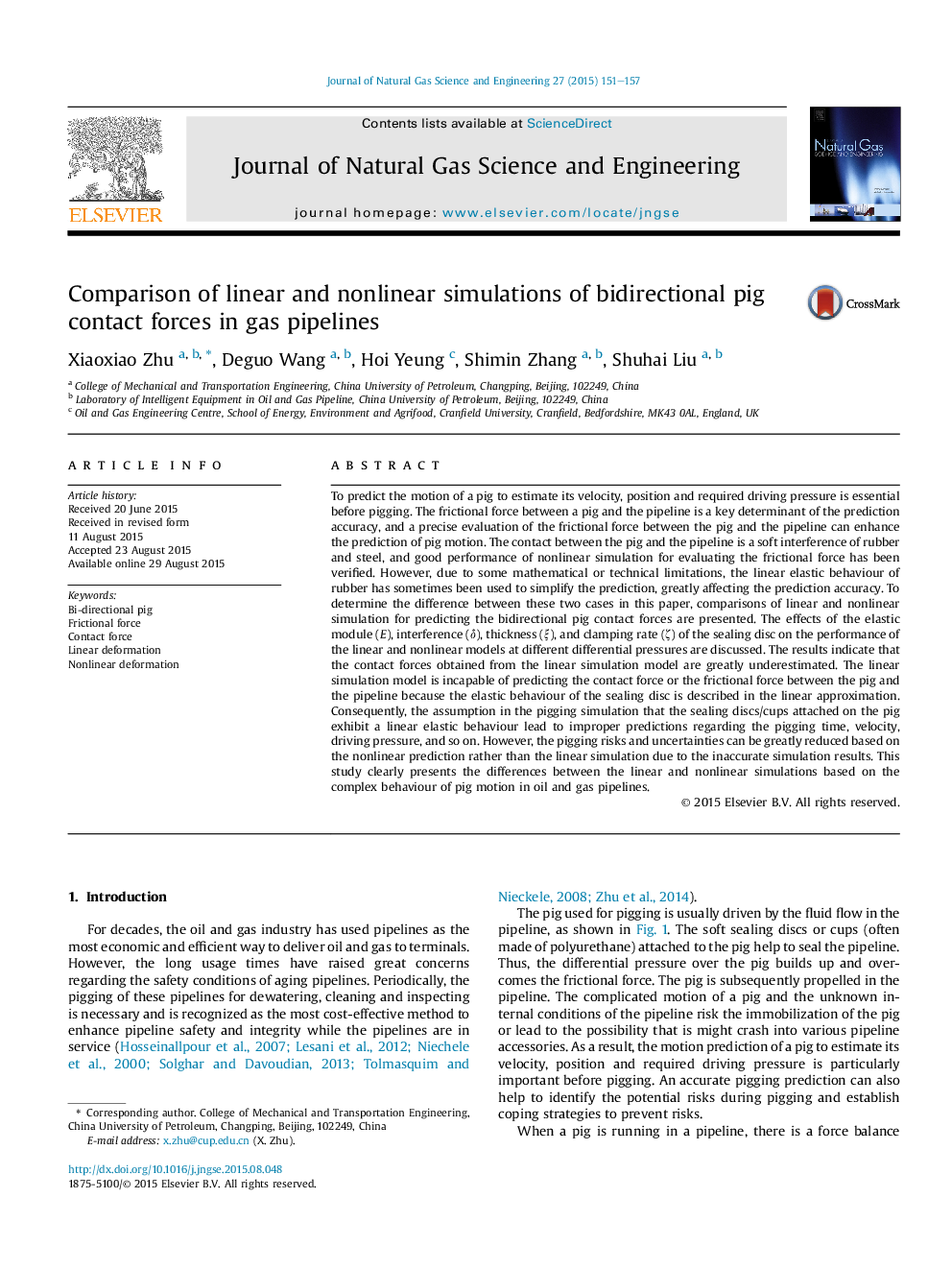| Article ID | Journal | Published Year | Pages | File Type |
|---|---|---|---|---|
| 1757467 | Journal of Natural Gas Science and Engineering | 2015 | 7 Pages |
•A 2D linear model for simulating the contact force of a pig is proposed.•Comparison of linear simulation and nonlinear simulation is investigated.•Effects of parameters on performance of the nonlinear and linear model are discussed.•Linear simulation model is incapable of predicting the contact force.
To predict the motion of a pig to estimate its velocity, position and required driving pressure is essential before pigging. The frictional force between a pig and the pipeline is a key determinant of the prediction accuracy, and a precise evaluation of the frictional force between the pig and the pipeline can enhance the prediction of pig motion. The contact between the pig and the pipeline is a soft interference of rubber and steel, and good performance of nonlinear simulation for evaluating the frictional force has been verified. However, due to some mathematical or technical limitations, the linear elastic behaviour of rubber has sometimes been used to simplify the prediction, greatly affecting the prediction accuracy. To determine the difference between these two cases in this paper, comparisons of linear and nonlinear simulation for predicting the bidirectional pig contact forces are presented. The effects of the elastic module (E), interference (δ), thickness (ξ), and clamping rate (ζ) of the sealing disc on the performance of the linear and nonlinear models at different differential pressures are discussed. The results indicate that the contact forces obtained from the linear simulation model are greatly underestimated. The linear simulation model is incapable of predicting the contact force or the frictional force between the pig and the pipeline because the elastic behaviour of the sealing disc is described in the linear approximation. Consequently, the assumption in the pigging simulation that the sealing discs/cups attached on the pig exhibit a linear elastic behaviour lead to improper predictions regarding the pigging time, velocity, driving pressure, and so on. However, the pigging risks and uncertainties can be greatly reduced based on the nonlinear prediction rather than the linear simulation due to the inaccurate simulation results. This study clearly presents the differences between the linear and nonlinear simulations based on the complex behaviour of pig motion in oil and gas pipelines.
